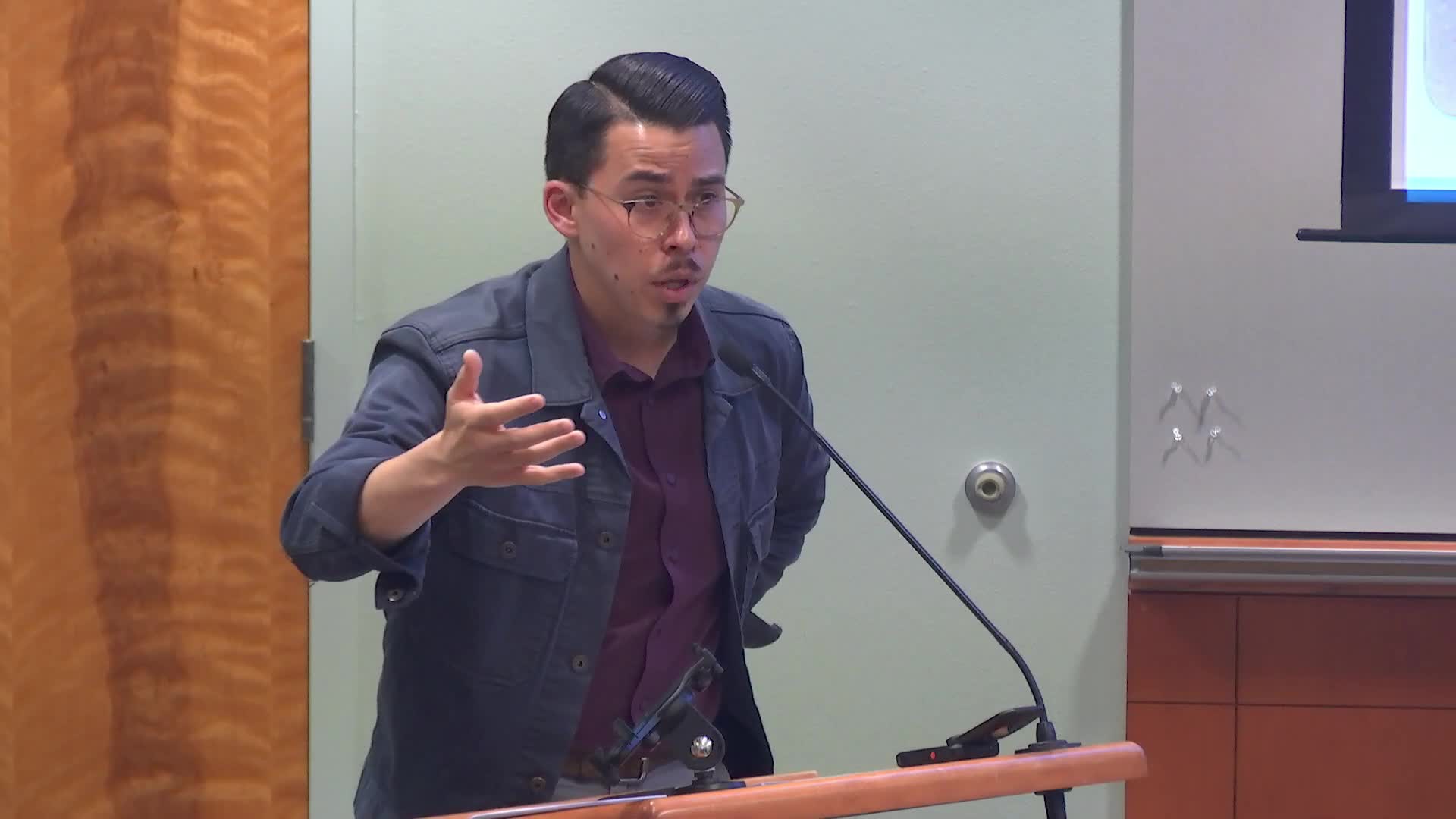Filipino immigration shaped by American colonization of The Philippines
May 09, 2025 | Events, Lacey, Thurston County, Washington
This article was created by AI summarizing key points discussed. AI makes mistakes, so for full details and context, please refer to the video of the full meeting. Please report any errors so we can fix them. Report an error »

During a recent government meeting in Lacey, Washington, discussions centered on the historical context of Filipino migration to the United States, particularly in relation to American imperialism and economic policies. The meeting highlighted how the colonization of the Philippines played a crucial role in shaping immigration patterns, especially during the early 20th century.
A key point raised was the concept of economic cycles, specifically the "boom and bust" phenomenon. The speaker emphasized that American policymakers sought to avoid economic downturns by envisioning an "infinite market" where surplus goods could always find a buyer. This led to a focus on China as a potential market for American products. However, the speaker noted that this theory was flawed and did not account for the complexities of global trade.
The discussion then shifted to the unique status of Filipino immigrants in the context of U.S. immigration laws. Unlike other Asian groups, Filipinos were not subject to the restrictive 1924 immigration law, which limited Asian immigration. This exemption was attributed to the Philippines being a U.S. colony at the time. For a decade, Filipinos could migrate to the U.S. with relative ease, a situation that changed with the 1934 Tidings-McDuffie Act, which reclassified the Philippines as a foreign country in preparation for its independence.
This historical perspective sheds light on the broader implications of U.S. colonial policies and their lasting impact on immigration patterns. The meeting underscored the importance of understanding these historical contexts to grasp the complexities of Asian American identities and migration experiences today.
As the community continues to explore these themes, the discussions from this meeting serve as a reminder of the interconnectedness of history, policy, and migration, prompting further inquiry into how these factors shape contemporary society.
A key point raised was the concept of economic cycles, specifically the "boom and bust" phenomenon. The speaker emphasized that American policymakers sought to avoid economic downturns by envisioning an "infinite market" where surplus goods could always find a buyer. This led to a focus on China as a potential market for American products. However, the speaker noted that this theory was flawed and did not account for the complexities of global trade.
The discussion then shifted to the unique status of Filipino immigrants in the context of U.S. immigration laws. Unlike other Asian groups, Filipinos were not subject to the restrictive 1924 immigration law, which limited Asian immigration. This exemption was attributed to the Philippines being a U.S. colony at the time. For a decade, Filipinos could migrate to the U.S. with relative ease, a situation that changed with the 1934 Tidings-McDuffie Act, which reclassified the Philippines as a foreign country in preparation for its independence.
This historical perspective sheds light on the broader implications of U.S. colonial policies and their lasting impact on immigration patterns. The meeting underscored the importance of understanding these historical contexts to grasp the complexities of Asian American identities and migration experiences today.
As the community continues to explore these themes, the discussions from this meeting serve as a reminder of the interconnectedness of history, policy, and migration, prompting further inquiry into how these factors shape contemporary society.
View full meeting
This article is based on a recent meeting—watch the full video and explore the complete transcript for deeper insights into the discussion.
View full meeting
